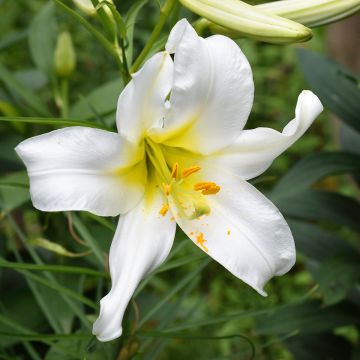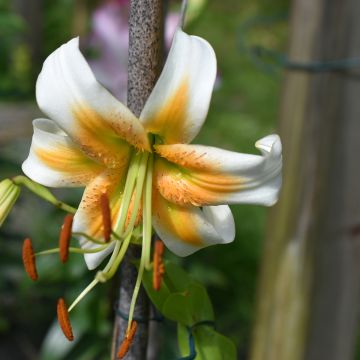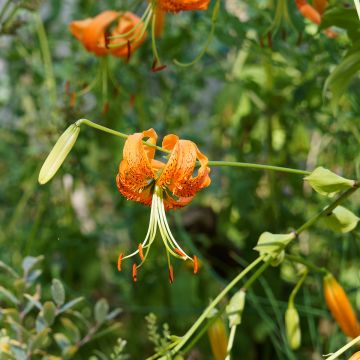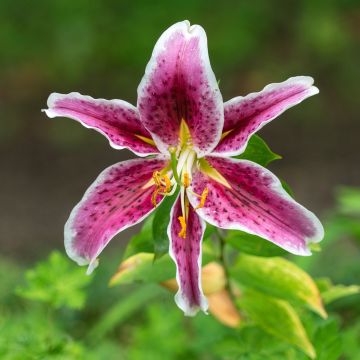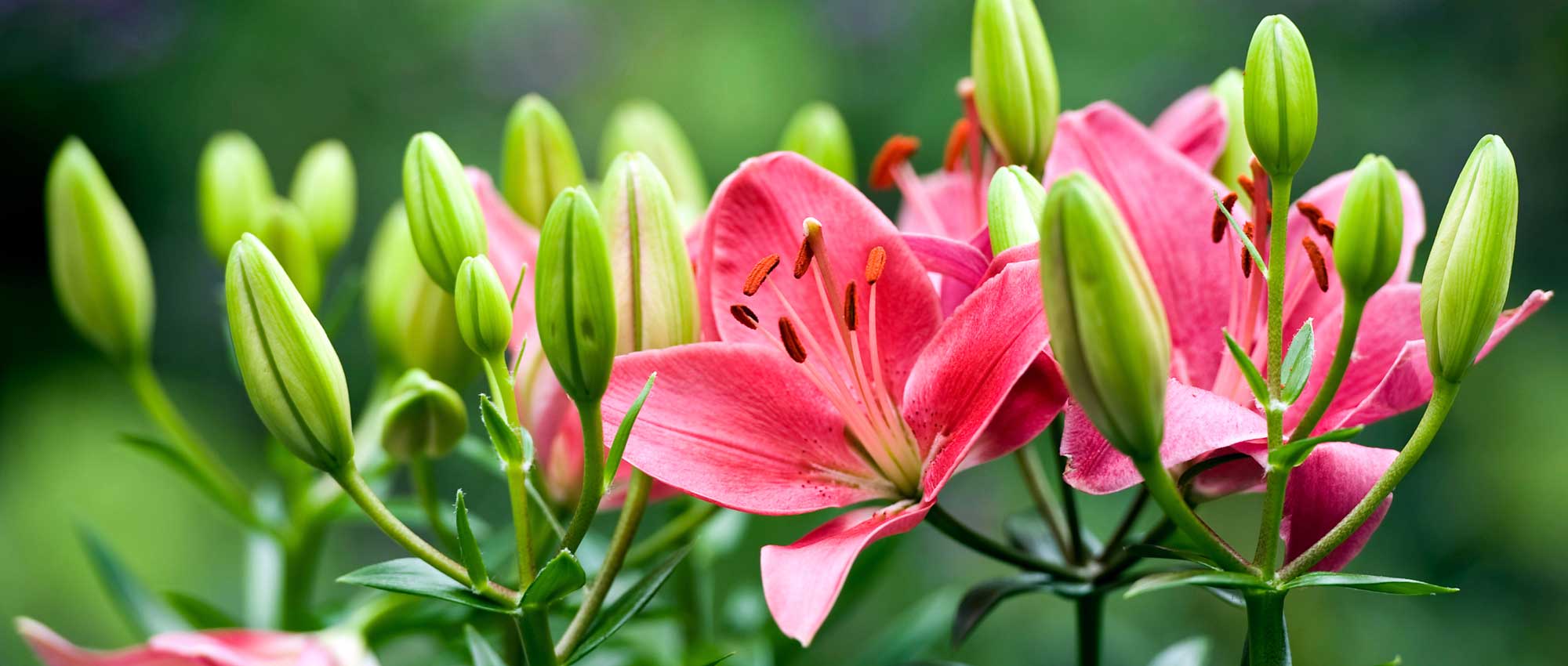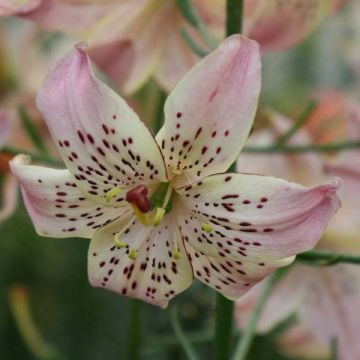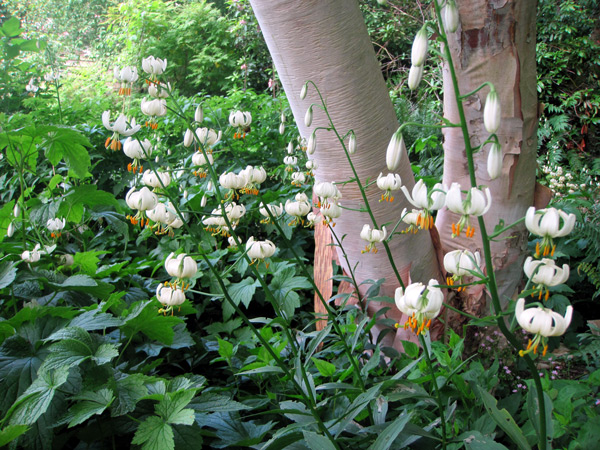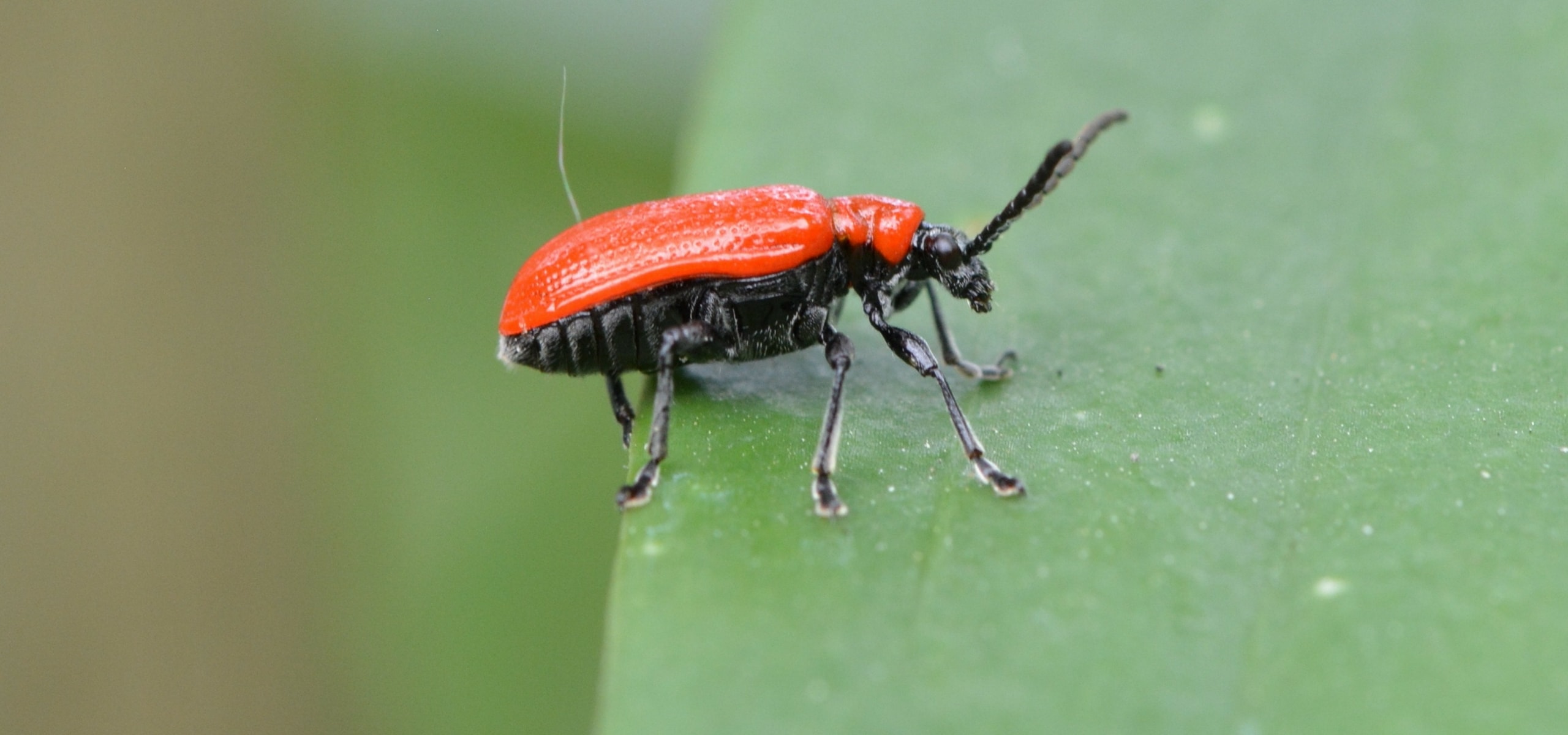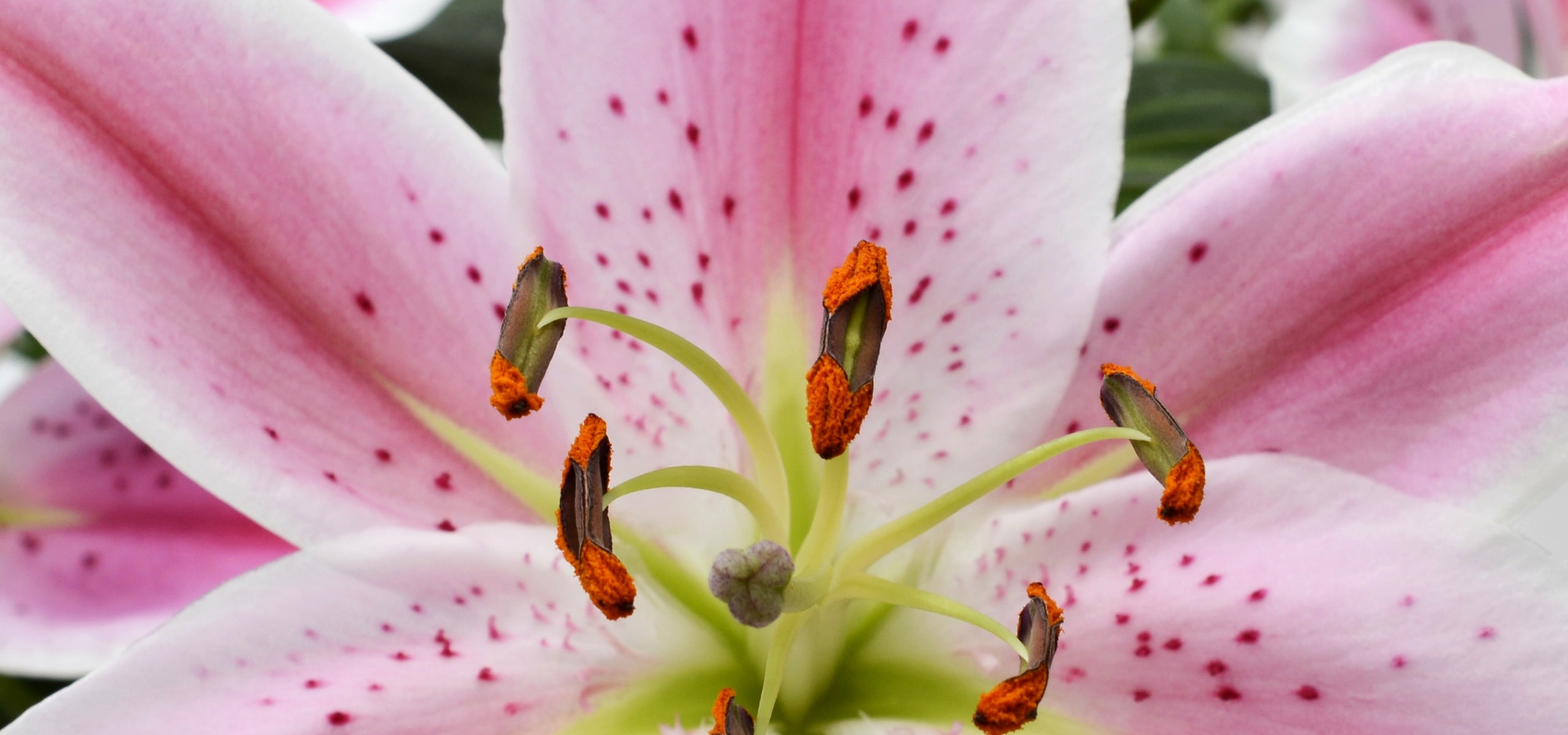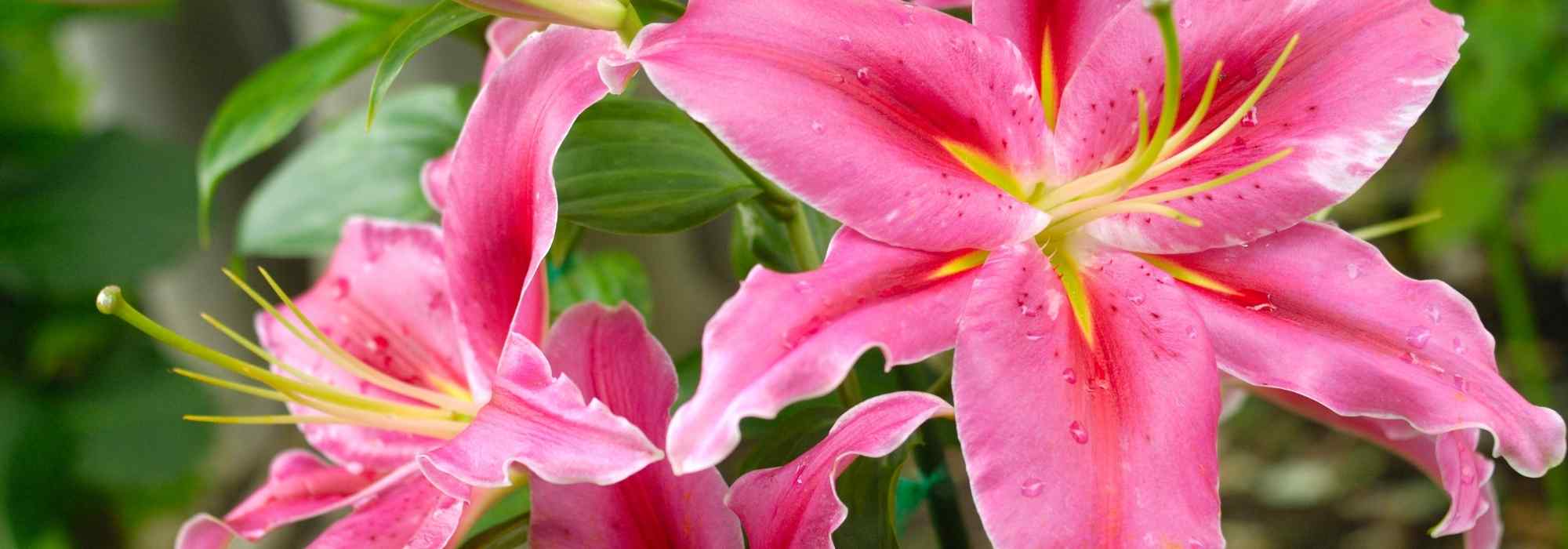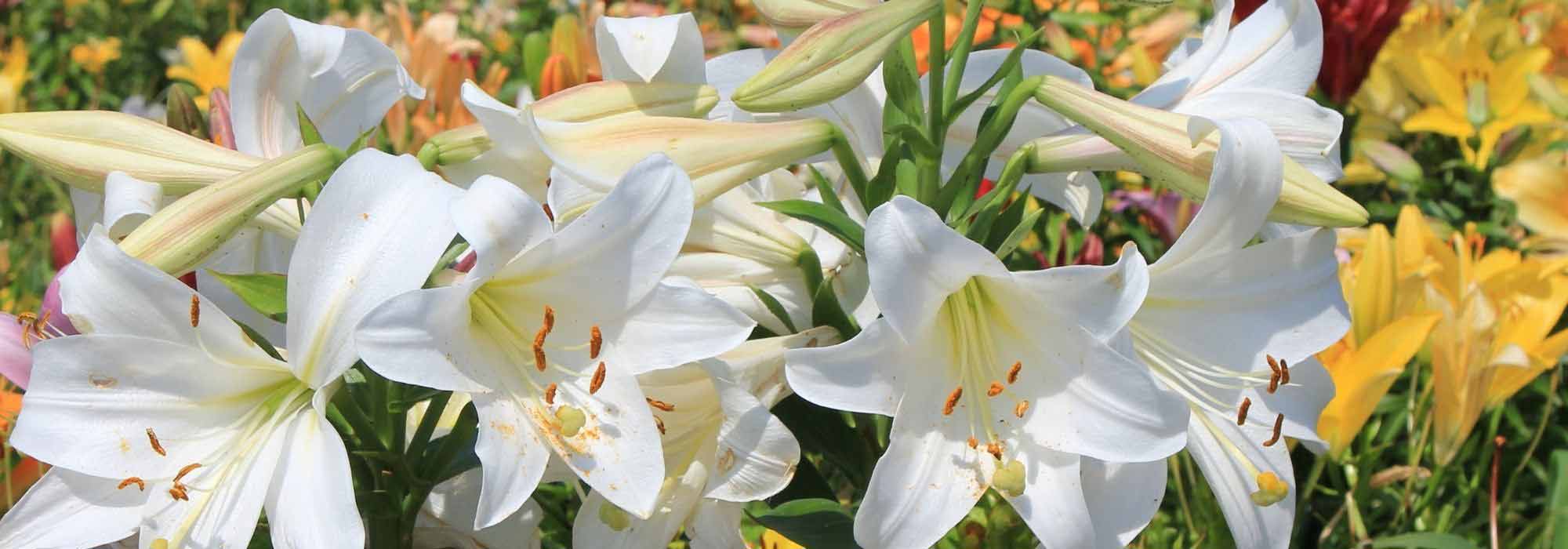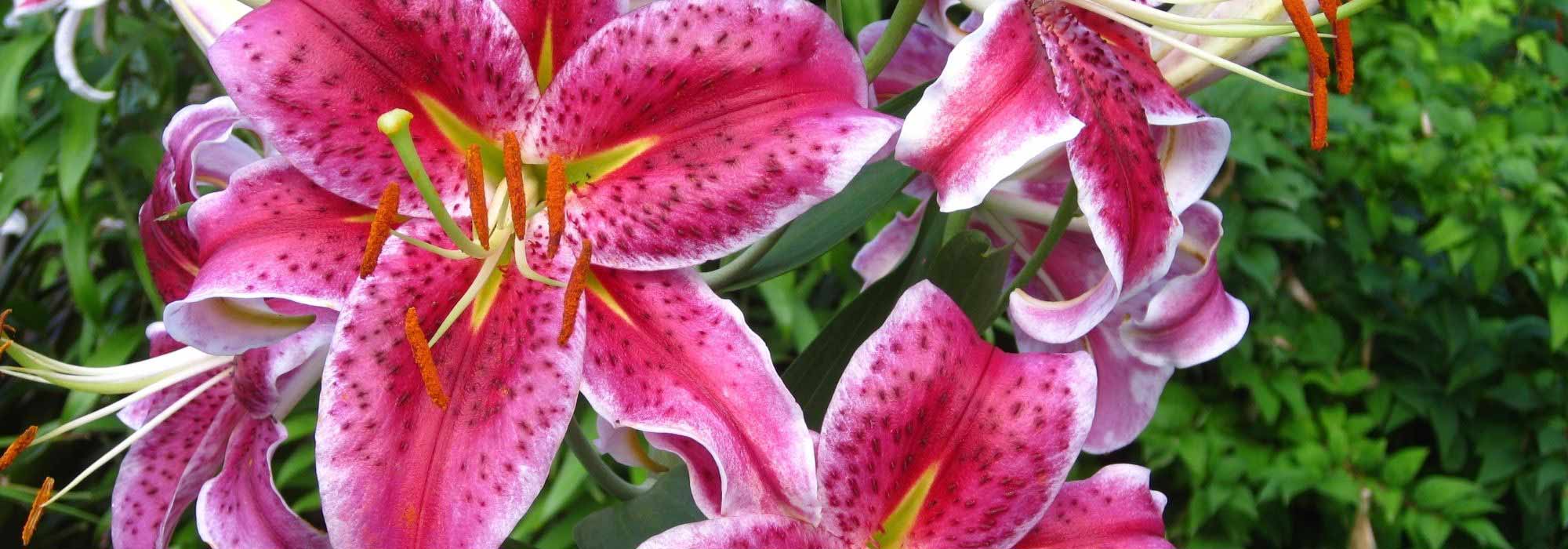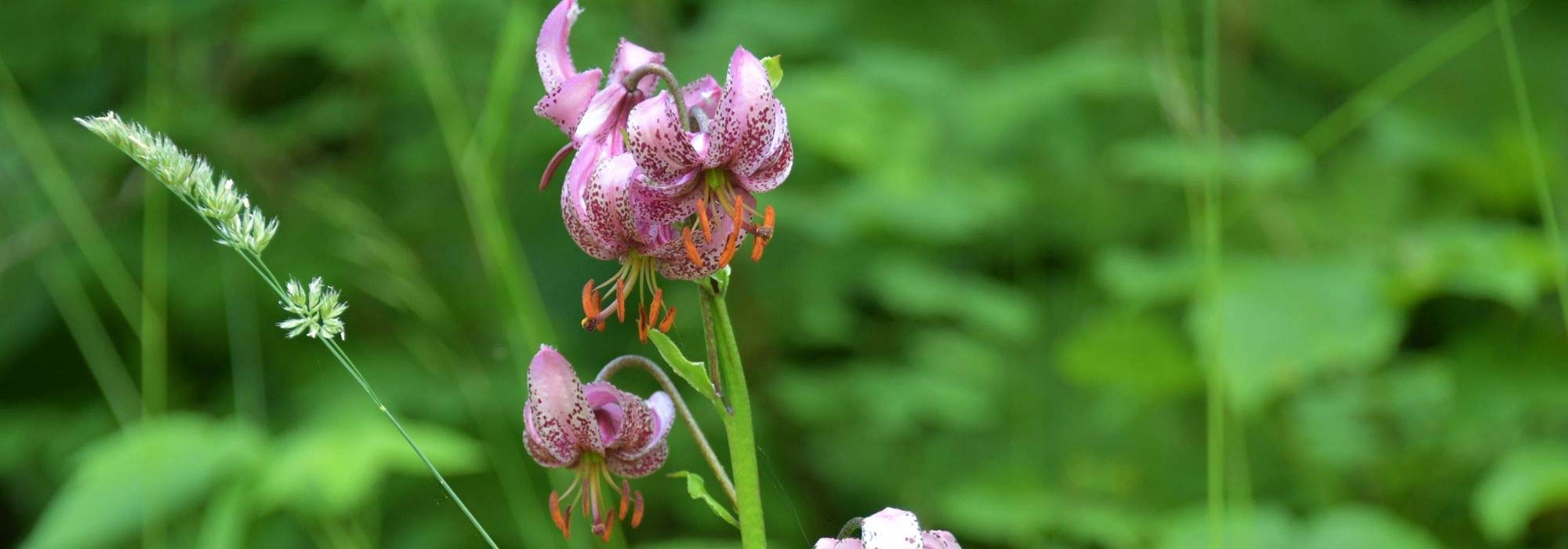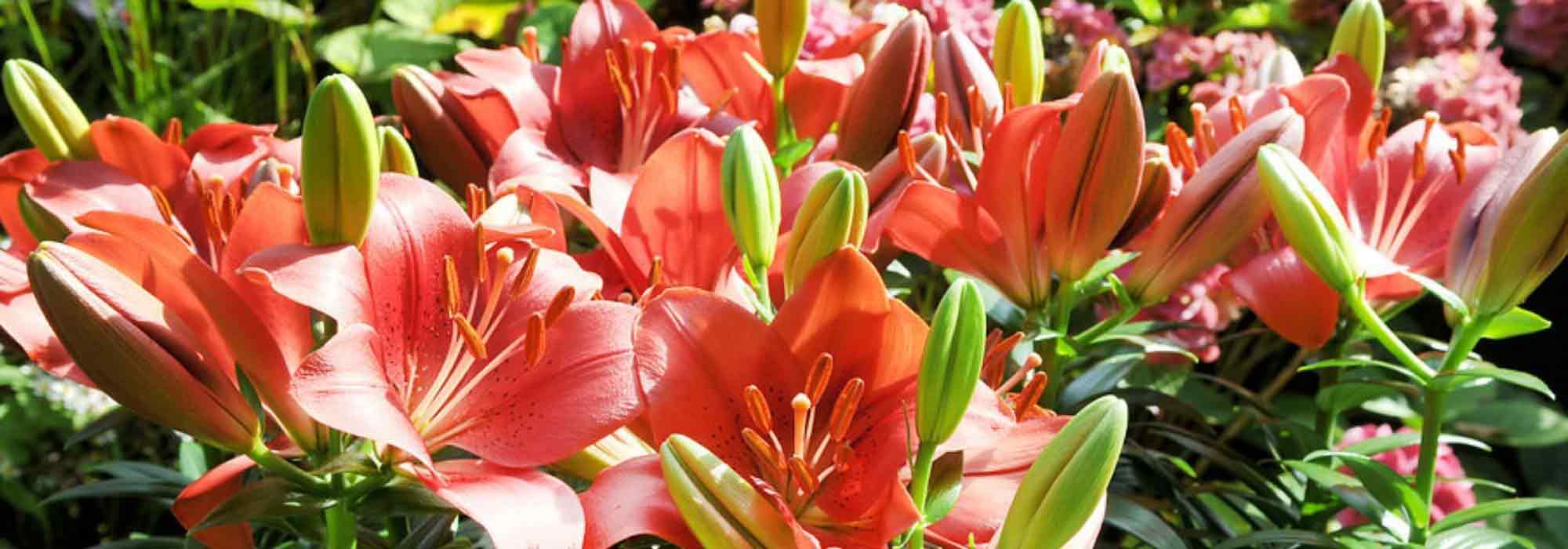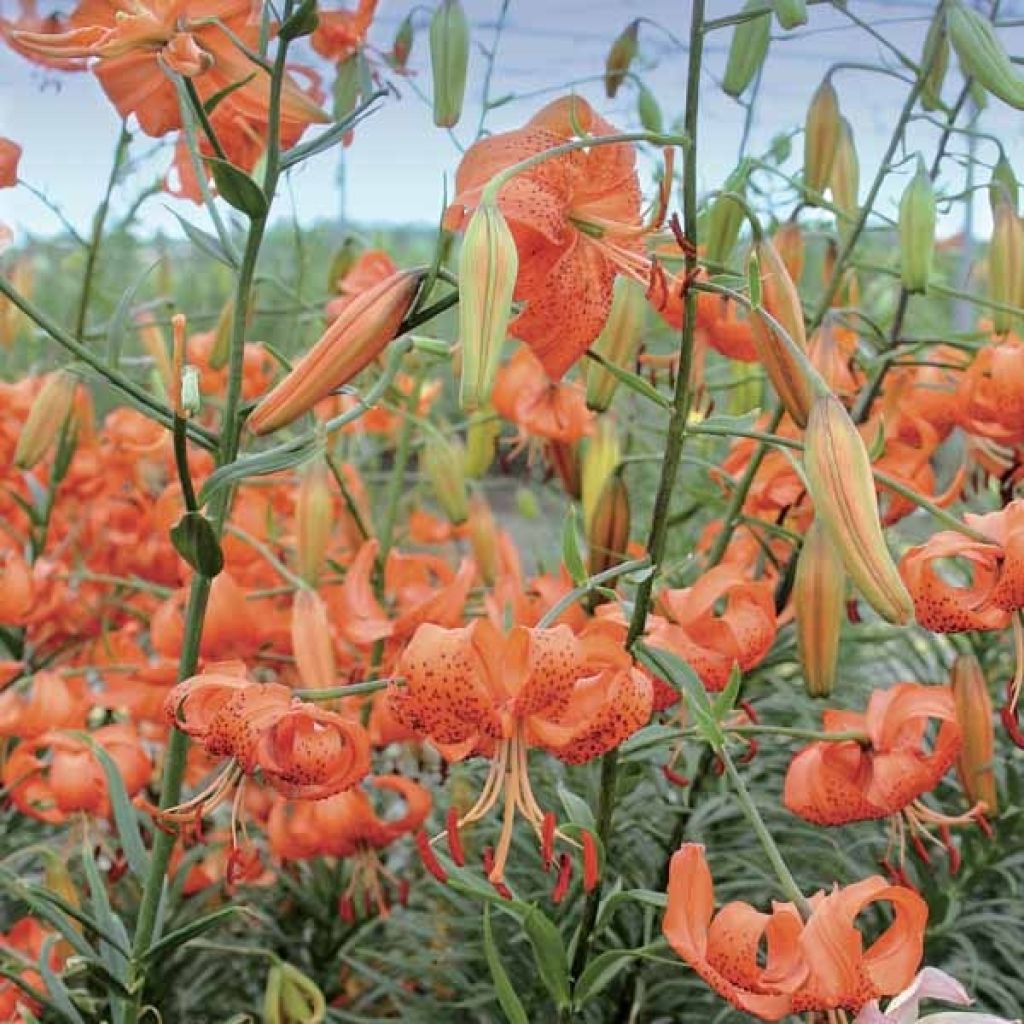

Lis tigrinum splendens
Lilium lancifolium Splendens
Lilium lancifolium splendens
Tiger Lily, Ditch Lily, Japanese Tiger Lily
Thank you to the individuals (Anne Flore for order preparation and C.L. for shipping), the bulbs received appear to be healthy. Planted near the rose "The Poet's Wife," I am now patiently awaiting their growth... or not?" Analysis: - "specific research area" has not been used in the text, so no replacement is necessary. - "flore" has been replaced with "flora" in the context of "rosier," which means "rose" in English. - No spelling, grammar, or structural errors have been detected. - The tone of the original text has been maintained in the translation.
Thierry, 07/03/2023
Special offer!
Receive a €20 voucher for any order over €90 (excluding delivery costs, credit notes, and plastic-free options)!
1- Add your favorite plants to your cart.
2- Once you have reached €90, confirm your order (you can even choose the delivery date!).
3- As soon as your order is shipped, you will receive an email containing your voucher code, valid for 3 months (90 days).
Your voucher is unique and can only be used once, for any order with a minimum value of €20, excluding delivery costs.
Can be combined with other current offers, non-divisible and non-refundable.
Why not try an alternative variety in stock?
View all →This plant carries a 6 months recovery warranty
More information
We guarantee the quality of our plants for a full growing cycle, and will replace at our expense any plant that fails to recover under normal climatic and planting conditions.

Does this plant fit my garden?
Set up your Plantfit profile →
Description
Lilium lancefolium 'Splendens or Tiger Lily has pendulous orange flowers with purple markings at the base of the petals. It blooms generously from June to August and diffuses a very pleasant fragrance. This botanical species is easy to grow and one of the most common and oldest in cultivation. It makes an excellent cut flower, which can last for 14 to 16 days.
Tiger Lily is a perennial bulbous and deciduous plant belonging to the Liliaceae family. It is native to China and Japan. The plant can reach a height of 130 cm (51in), with a spread of 50 cm (20in) and flowers from June to August with clusters of ten to twenty flowers, measuring 3 to 8 cm (1 to 3in) in diameter. The stems are black, and many dark purple bulblets form in the axils of the leaves. It has green, simple, and alternate leaves. They are lanceolate and sessile with an entire margin. This plant can naturalise if the conditions are suitable.
Lilium lancefolium 'Splendens' prefers a rich, loose, slightly alkaline, moist and well-drained soil. This vigorous lily thrives even in poor soil. Plant it in full sun or light shade, as it tolerates both very well. Avoid exposing it to too much shade, as it can become too tall. Also, avoid windy spots. It is best to plant the bulbs in spring or October, 15 cm (6in) deep in a pocket of soil mixed with leaf compost. Surround them with a layer of sand to prevent rot and slug attacks while allowing them to grow more easily. Mark the planting location, as the vegetation only starts in April. Stake when the stems reach 30 cm (12in) high. If red lily beetles appear, treat them immediately as their larvae can devour all the leaves. The most effective method is to catch them manually but be careful as they drop as soon as touched.
After flowering, it is a good idea to cut the faded flowers halfway to keep the bed beautiful during summer and prevent the plants' energy from being wasted on seed production. Cut the plants to the ground once the leaves and stems have turned yellow.
You can grow these lilies with non-invasive perennial plants (dahlias, lupins, gauras, delphiniums) as they like having their feet in the shade, and the perennials will help prevent the stems from leaning in the wind. The lily is ideal for borders but also performs well in pots and, of course, in bouquets.
Bulbs and flower buds are consumed in Japan and China.
Plant habit
Flowering
Foliage
Botanical data
Lilium
lancifolium
splendens
Liliaceae
Tiger Lily, Ditch Lily, Japanese Tiger Lily
Cultivar or hybrid
Other Botanical Lilies
View all →Planting and care
Lilium lncefolium 'Splendens' prefers rich, loose, slightly alkaline, moist and well-drained soil. This vigorous tiger lily thrives even in poor soil. Plant it in the sun or in light shade, which it tolerates very well. However, be careful not to expose it too much to shade, as it will grow too tall. Also, avoid windy corridors. Plant the bulbs in spring or October, 15 cm (6in) deep in a pocket of soil mixed with leaf compost. Surround them with a layer of sand that will protect them from rot and slug attacks, while allowing them to grow more easily. Mark the planting location, as the vegetation only starts in April. Stake when the stems reach 30 cm (12in) high. If red lily beetles appear, treat them immediately, as their larvae can devour all the leaves. The most effective method is to catch them manually but be careful as they drop as soon as they are touched. After flowering, it is a good idea to cut the faded flowers halfway to keep the bed beautiful during summer and prevent the plants' energy from being wasted on seed production. Cut the plants to the ground once the leaves and stems have turned yellow. Lilies are well-suited for pot cultivation. Plant 1 to 5 bulbs in a deep pot, water them a little and place your pots in a frost-free location. Bring them out in spring and enjoy their colours on your terrace!
Planting period
Intended location
Care
Planting & care advice
-
, onOrder confirmed
Reply from on Promesse de fleurs
Haven't found what you were looking for?
Hardiness is the lowest winter temperature a plant can endure without suffering serious damage or even dying. However, hardiness is affected by location (a sheltered area, such as a patio), protection (winter cover) and soil type (hardiness is improved by well-drained soil).

Photo Sharing Terms & Conditions
In order to encourage gardeners to interact and share their experiences, Promesse de fleurs offers various media enabling content to be uploaded onto its Site - in particular via the ‘Photo sharing’ module.
The User agrees to refrain from:
- Posting any content that is illegal, prejudicial, insulting, racist, inciteful to hatred, revisionist, contrary to public decency, that infringes on privacy or on the privacy rights of third parties, in particular the publicity rights of persons and goods, intellectual property rights, or the right to privacy.
- Submitting content on behalf of a third party;
- Impersonate the identity of a third party and/or publish any personal information about a third party;
In general, the User undertakes to refrain from any unethical behaviour.
All Content (in particular text, comments, files, images, photos, videos, creative works, etc.), which may be subject to property or intellectual property rights, image or other private rights, shall remain the property of the User, subject to the limited rights granted by the terms of the licence granted by Promesse de fleurs as stated below. Users are at liberty to publish or not to publish such Content on the Site, notably via the ‘Photo Sharing’ facility, and accept that this Content shall be made public and freely accessible, notably on the Internet.
Users further acknowledge, undertake to have ,and guarantee that they hold all necessary rights and permissions to publish such material on the Site, in particular with regard to the legislation in force pertaining to any privacy, property, intellectual property, image, or contractual rights, or rights of any other nature. By publishing such Content on the Site, Users acknowledge accepting full liability as publishers of the Content within the meaning of the law, and grant Promesse de fleurs, free of charge, an inclusive, worldwide licence for the said Content for the entire duration of its publication, including all reproduction, representation, up/downloading, displaying, performing, transmission, and storage rights.
Users also grant permission for their name to be linked to the Content and accept that this link may not always be made available.
By engaging in posting material, Users consent to their Content becoming automatically accessible on the Internet, in particular on other sites and/or blogs and/or web pages of the Promesse de fleurs site, including in particular social pages and the Promesse de fleurs catalogue.
Users may secure the removal of entrusted content free of charge by issuing a simple request via our contact form.
The flowering period indicated on our website applies to countries and regions located in USDA zone 8 (France, the United Kingdom, Ireland, the Netherlands, etc.)
It will vary according to where you live:
- In zones 9 to 10 (Italy, Spain, Greece, etc.), flowering will occur about 2 to 4 weeks earlier.
- In zones 6 to 7 (Germany, Poland, Slovenia, and lower mountainous regions), flowering will be delayed by 2 to 3 weeks.
- In zone 5 (Central Europe, Scandinavia), blooming will be delayed by 3 to 5 weeks.
In temperate climates, pruning of spring-flowering shrubs (forsythia, spireas, etc.) should be done just after flowering.
Pruning of summer-flowering shrubs (Indian Lilac, Perovskia, etc.) can be done in winter or spring.
In cold regions as well as with frost-sensitive plants, avoid pruning too early when severe frosts may still occur.
The planting period indicated on our website applies to countries and regions located in USDA zone 8 (France, United Kingdom, Ireland, Netherlands).
It will vary according to where you live:
- In Mediterranean zones (Marseille, Madrid, Milan, etc.), autumn and winter are the best planting periods.
- In continental zones (Strasbourg, Munich, Vienna, etc.), delay planting by 2 to 3 weeks in spring and bring it forward by 2 to 4 weeks in autumn.
- In mountainous regions (the Alps, Pyrenees, Carpathians, etc.), it is best to plant in late spring (May-June) or late summer (August-September).
The harvesting period indicated on our website applies to countries and regions in USDA zone 8 (France, England, Ireland, the Netherlands).
In colder areas (Scandinavia, Poland, Austria...) fruit and vegetable harvests are likely to be delayed by 3-4 weeks.
In warmer areas (Italy, Spain, Greece, etc.), harvesting will probably take place earlier, depending on weather conditions.
The sowing periods indicated on our website apply to countries and regions within USDA Zone 8 (France, UK, Ireland, Netherlands).
In colder areas (Scandinavia, Poland, Austria...), delay any outdoor sowing by 3-4 weeks, or sow under glass.
In warmer climes (Italy, Spain, Greece, etc.), bring outdoor sowing forward by a few weeks.






























